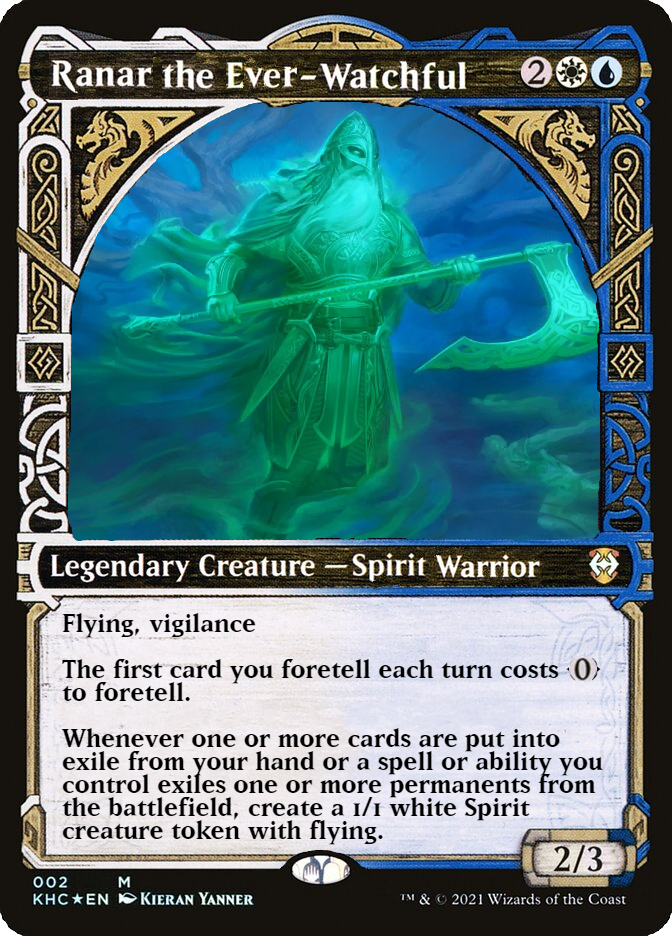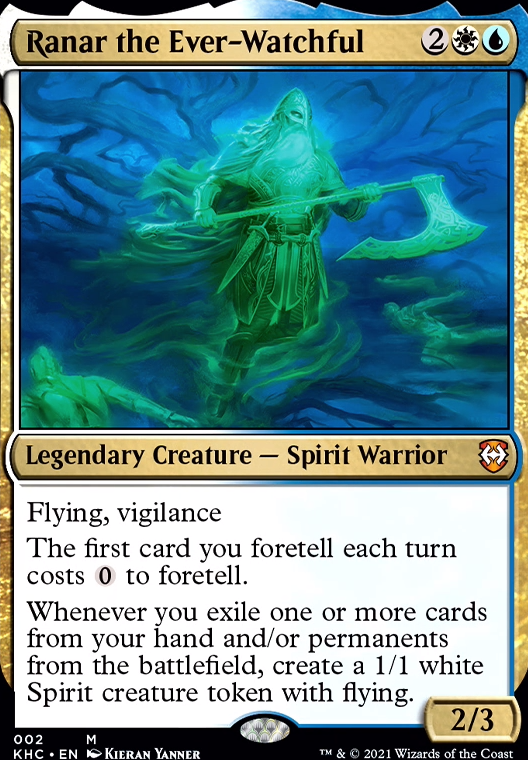
Combos Browse all Suggest
Tokens
Legality
| Format | Legality |
| 1v1 Commander | Legal |
| Archenemy | Legal |
| Canadian Highlander | Legal |
| Casual | Legal |
| Commander / EDH | Legal |
| Commander: Rule 0 | Legal |
| Custom | Legal |
| Duel Commander | Legal |
| Highlander | Legal |
| Legacy | Legal |
| Leviathan | Legal |
| Limited | Legal |
| Oathbreaker | Legal |
| Planechase | Legal |
| Quest Magic | Legal |
| Vanguard | Legal |
| Vintage | Legal |
Rules Q&A
Ranar the Ever-Watchful
Legendary Creature — Spirit Warrior
Flying, vigilance
The first card you foretell each turn costs to foretell.
Whenever you exile one or more cards from your hand/or permanents from the battlefield, create a 1/1 white Spirit creature token with flying.
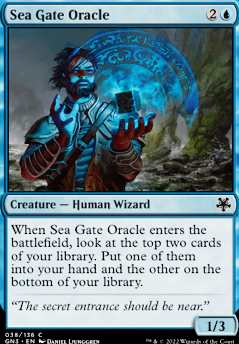
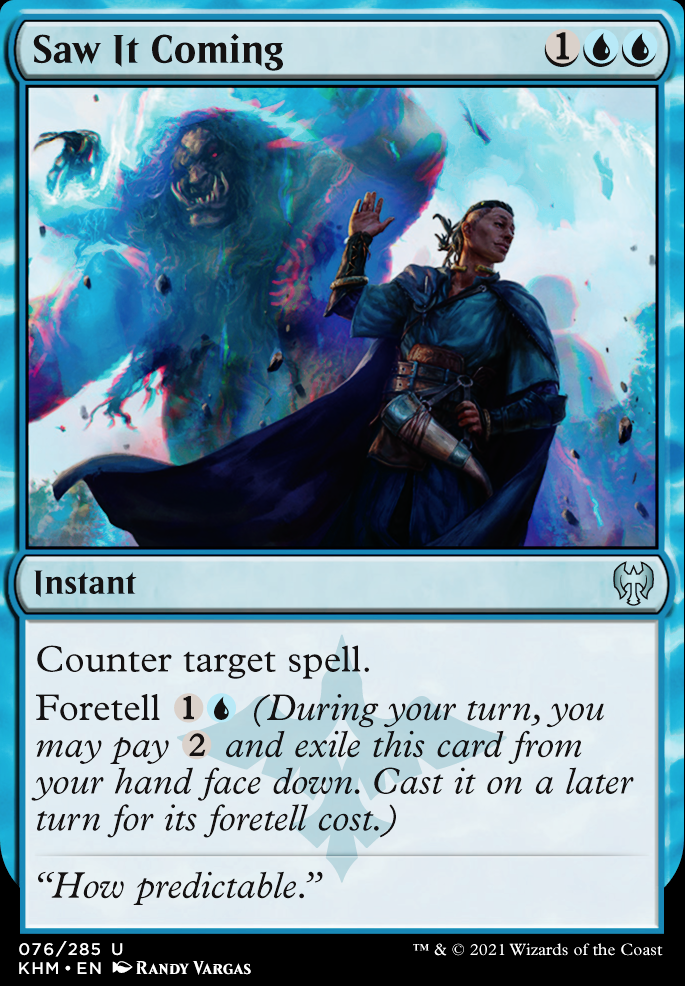
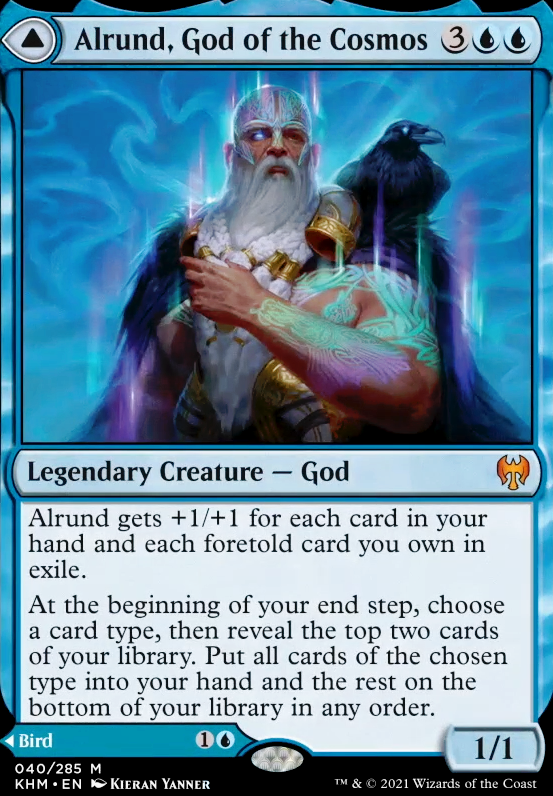




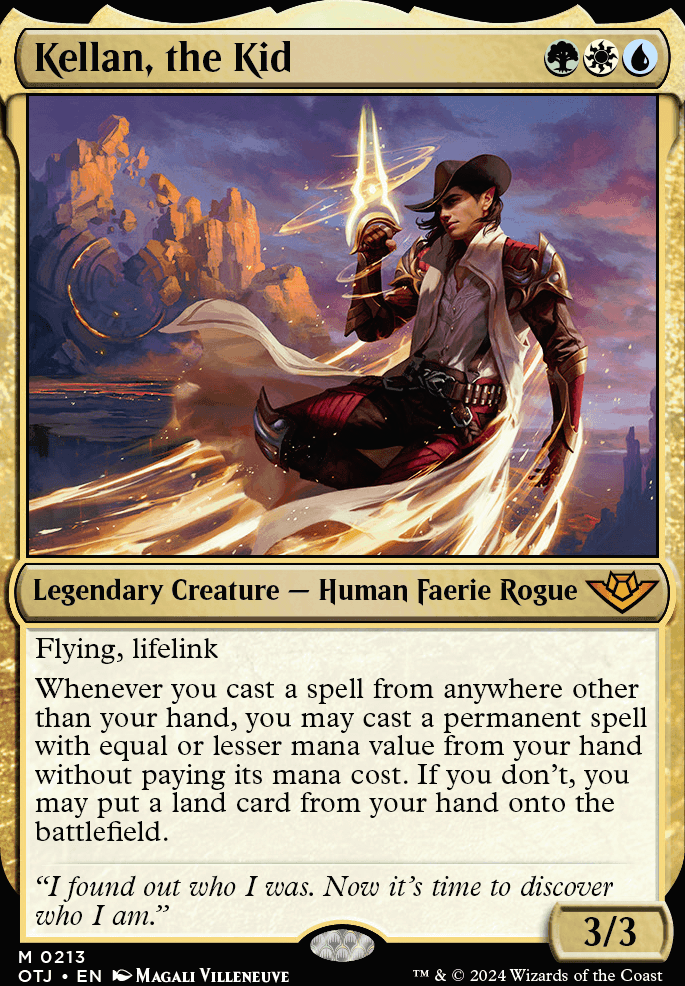
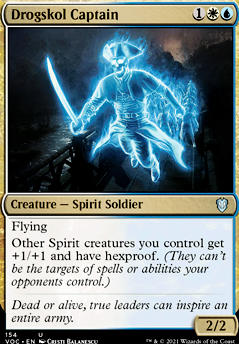
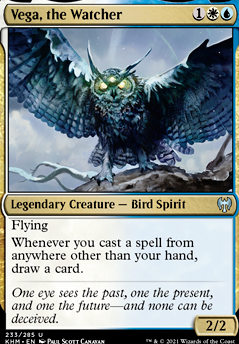
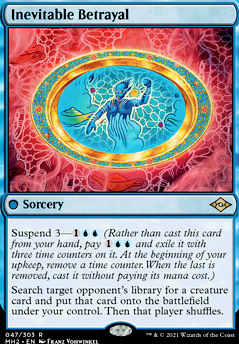
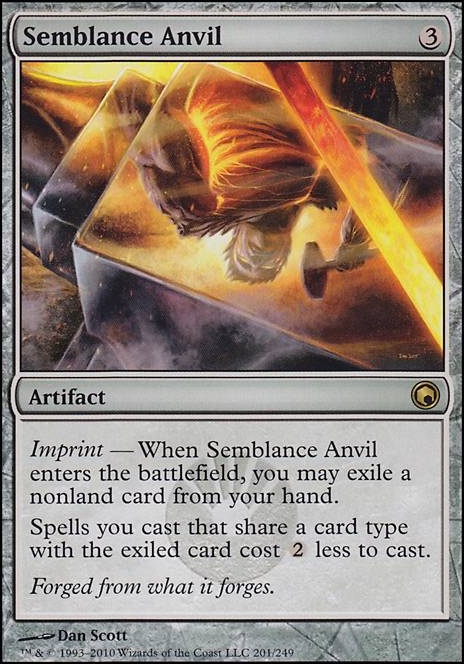
MagicSteve6 on White spirit token cards that …
1 year ago
I have an EDH deck with Ranar the Ever-Watchful as the commander, so I make a bunch of White 1/1 Spirit Tokens.
I found these super cool custom token cards on Etsy (link below), but they don't exactly convey that the tokens are white, with the background color being black. Do you think that's a problem aesthetically (just feeling kinda off) or functionally (other players getting confused on the color)?
https://www.etsy.com/listing/1317676871/5x-spirit-tokens-for-magic-the-gathering?show_sold_out_detail=1&ref=nla_listing_details
Guerric on Deck Archetypes in EDH
1 year ago
Hi all! There's an interesting question I've been pondering lately, and I thought I'd share some of my reflections on it and get input from all of you. In sixty card magic we have deck archetypes, namely aggro, control, midrange, combo, and tempo. In commander obviously things look pretty different, and several years ago on the Command Zone podcast they said that like in limited, there aren't really deck archetypes this way, just different flavors of midrange.
As the format has developed and changed a lot over the years I do think something like these archetypes exists in commander, they're just different. For those familiar with sixty card formats some of the hard and fast rules for those archetypes in sixty card magic do not apply, and there certainly is more fluidity on commander and other unique multiplayer strategies as well (ex. Group Hug). Nonetheless, I think the outline of most of these archetypes is still relevant. Here is how I think it plays out-
1) Aggro- I think something more like classic aggro has only become viable in commander in the past couple of years, but I think it is definitely a thing now. In sixty card magic, most creatures are in the one to three drop range, there is often no focus on card draw, and everything in the deck serves to get a single player to zero as quickly as possible. Obviously in commander we need raw engines, some ramp, and are going to play more powerful cards. That being said, I think strategies built around attacking with high value, low cmc creatures from the early game onwards characterizes aggro in commander. This wasn't viable a few years ago due to the lack of board state protection, and really only token pump decks and creature cheat decks tended to do well. But the printing of many premium white board state protection spells like Flawless Maneuver, Teferi's Protection, and Semester's End has changed up the formula a bit. Attacking low to the ground and early is a keystone of aggro strategies, but so are on attack triggers. We have so many of these now, and they incentivize keeping our force swinging every turn. Commanders like Akiri, Fearless Voyager and Trynn, Champion of Freedom incentivize attacking in order to draw cards, make tokens, or do other things the deck is going to want to do. Unlike sixty card magic, we will need to be able to draw cards, and play some removal and interaction, though we'll play fewer pieces of the latter here than in other decks since they compete with resources to keep up the attack. We also need to play one-sided board wipes wherever we have the option, because we can't afford to lose our own board state. We'll also need a way to get through for damage once our opponents' defenses are up, and as such things that give our creatures menace, landwalk, flying, deathtouch or indestructible are key as they help us keep up the assault. We're also very in favor of a few key pump spells to help us finish out the game like Jazal Goldmane or Coat of Arms.
2) Midrange- In sixty card magic midrange is characterized by playing some of the most powerful cards on every point in the curve, and play more removal than aggro decks. Oftentimes they are characterized as "the growing threat." A classic and famous example was the classic Modern Jund deck that Reid Duke piloted several years ago. One of its touchstones was playing Tarmogoyf on turn 2. The goyfs could attack or block where necessary, but they would grow more unstoppable as the game went on, until they were dropping haymakers like Liliana of the Veil. They would use cards like Dark Confidant to keep their hand full till they could inevitably win. In a way, these sorts of decks mirror something of what we see in all commander decks in that they play removal, draw, and powerful cards. Yet what I think sets them apart is this idea of the growing threat, and that they play more removal than aggro decks. One way in which I think some midrange commanders work is to have abilities that allow them to turn other cards into Tarmogoyf like threats. Ezuri, Claw of Progress and Giada, Font of Hope use +1/+1 counters to turn small evasive threates into significant ones. In this sense, I think a lot of counter decks fit well in the midrange categories. These decks will attack, but they don't have to like aggro decks, and are more willing to conserve resources and work on developing board state where feasible. They often have engines that benefit their board passively from the passage of time, and as such they can play more removal and let their board build itself. They still want to protect their board state, and some of the cards from aggro decks that do this or simply counterspells can help with this, and one-sided board wipes are usually th best kind for midrange decks as well.
3) Control- Control decks in sixty card magic are built on trying to shut down almost everything an opponent is trying to do via counterspells and removal until you can work towards a win con. This obviously is not possible in commander where you can not shut down three other players with just counterspells and removal alone, and isn't always necessary since opponents can also shut down each other. As such, controlling strategies fit into two categories: stax and regular control. With stax pieces that shut off lands and mana rocks, eEDH controlling strategies indeed can effectively shut down three other players, usually finding a way to work through it themselves in order to build towards a win con. In standard EDH, heavy land-based stax like that is frowned upon, but cards that disrupt play in other ways (ex. Blind Obedience as well as counterspells and removal are fair game. These decks are still building towards a win con by slowing opponents down, and will devote far more slots to disruption and removal than aggro and midrange decks. They may win with an infinite combo, a planeswalker, a few premium attacking creatures, or in other ways, but most of the deck is devoted to protecting themselves and disrupting opponents. Controlling decks are more likely to play reciprocal board wipes, and generally benefit from keeping the board clear of threats at most times.
4) Combo- Combo decks also exist along a spectrum in EDH, though this archetype is most similar to sixty card magic. The formula is almost unchanged for cEDH, where most of a deck is devoted to playing and protecting a single combo. Outside of cEDH, it is worth mentioning that infinite combos can be included in almost any archetype in the format as a backup win con when other plans go sideways. What makes it a combo deck is that the entire deck is focused on pulling out one of a variety of sometimes elaborate combos, and these decks are generally geared more towards Johnnies than Spikes. A good example would be combo decks built around Teysa, Orzhov Scion that can put together the Darkest Hour in a variety of ways, as well as play Reveillark + Karmic Guide and/or Sanguine Bond + Exquisite Blood in order to win. These decks play out as trying to put together a combo while fending off opponents with removal and interaction.
5) Tempo- Some might argue that there is no such thing as tempo decks in commander, but it's worth mentioning that they're pretty rare even in sixty card magic across formats. In sixty card magic tempo decks adopt a "disruptive aggro" philosophy, where they slowly chip away at an opponent's life total with small, cheap, evasive creatures, while always holding mana open to protect their board and disrupt threats. While "chipping away" life totals isn't much of a strategy in a multiplayer strategy, I do think there are decks that play out along the lines of this disruptive aggro strategy. As an example, Ranar the Ever-Watchful and Alela, Artful Provocateur can be played this way, where the flying tokens they generate are the main win con, and the rest of the deck is devoted to holding mana open to protect this main game plan and stop others from winning. Unlike in sixty card decks these may win all at once with token pump effects or other affects, but this is the main way.
What do you all think? Do you think there are deck archetypes like this in EDH? Why or why not? What qualifications would you add or take away about them if you do?
Guerric on
 [Primer] Helming the Host of Heaven *Update*
[Primer] Helming the Host of Heaven *Update*
1 year ago
I must not have re-optimized mana well after the previous session because I only drew three lands over the course of the entire first game. That being said, I still won! Even with only three mana and Giada the curve allowed me to do most of what I wanted to do and put most of my angels out, so the curve and the deck's ability to put up a board state quickly even with limited resources is great. The all-star of the first game was Crashing Drawbridge, which, as I suspected, is great in this deck. I finished by playing out Serra Avenger and Angelic Curator (with plenty of counters) and then swinging with them and all of my other angels for lethal because of drawbridge. It helped me close out the game before my opponent could stabilize and hit me with a wipe, which would have set me way back due to my lack of lands. Another great combo was Righteous Valkyrie which is every bit the powerhouse you'd think it would be in this deck and Resplendent Angel, which ensured that tokens were bolstering my army and that my life total was more than padded.
The second game was much more evenly matched and could have gone either way, but I pulled that one out in the end as well. This would not have happened if Eerie Interlude hadn't saved my cast angels from Curse of the Swine, attesting again to the importance of board state protection in this deck. Quite critically, interlude was the only thing in my deck currently that would have saved me from that (other than Lapse of Certainty, so I was glad to have it! The absolute all-star in this game was Thorough Investigation. Wow! What a card! I thought it might be good, but the whole enter-the-dungeon mechanic seemed a bit cute to me and I was ensure if I would want to pay to sac clue tokens. The answer is yes! I amassed so many tokens from Investigation (as well as a couple from Angelic Sleuth when I blinked it with Interlude) that I knew I could refill my hand at any point, which I did! I'm going to put this card in all of my aggro decks- its a hidden treasure! Angelic Skirmisher is also a must-run in the deck. Everyone plays Lyra Dawnbringer but some don't play this card, which I feel like is better. While the life-link aura is the thing in this deck and two copies of it was great, I definitely experienced the utility of the first strike aura when I wanted to swing with Valkyrie Harbinger but was afraid to lose it to a large flying blocker. First strike made it so that he didn't want to block! Vigilance is also great, and Thraben Watcher was already making sure I wasn't in danger on the crack back in this matchup, but Skirmisher could situationally help with that as well. I finished it out by clearing away all of his blockers (including some absurdly large creatures) with Winds of Abandon. He put 13 lands onto the battlefield, but died to my Angelic Armada.
In both of these games, as with in the previous ones I've reported on, the life gain was real and powerful! I finished the second game with 98 life and the first one with life somewhere in the 70s, so this deck works amazingly well that way. I also played a turn one Soul Warden the first game and was quite thankful for it. I wasn't totally sure about the soul sisters in this deck, but I think I am glad for them. Another huge success in several games so far are the Angelic Accord effects. Having four of them makes it a consistent subtheme, and even a couple of free giant angel tokens goes a long way to killing opponents. I think my issues with card draw aren't that I don't have draw or that it doesn't work, just that this deck is hungry for more of it, which I will address in the first revision coming soon. I've already ordered some more cards based in part on suggestions I've received here from some of you, so thanks for those! I will post the revisions once they are made and my reasoning for them. I'll also update the primer and the acknowledgements to offer credit where credit is due!
KBK7101 on Getting back
2 years ago
Out of the four, I'd probably go with either Selvala or Brago. I think both of them could be pretty decent, even at a lower starting budget. They've also both gotten some stuff in the past few years that have basically become staples.
Selvala has stuff like Return of the Wildspeaker, Kogla, the Titan Ape, Unnatural Growth and Garruk's Uprising on the lower end and stuff like The Great Henge, Finale of Devastation and Cultivator Colossus on the higher end.
Brago has gotten some great stuff as well. Teleportation Circle, Spirited Companion, Ranar the Ever-Watchful, Charming Prince, Hero of Bretagard and Yorion, Sky Nomad alongside more expensive ones like Thassa, Deep-Dwelling, Agent of Treachery (card is pure evil, by the way), Fierce Guardianship and Lithoform Engine.
Stardragon on Need a Teacher to help …
2 years ago
I'm making a Foretell/Learn deck not sure if they work well together but i want to try, I'm leaning towards Vega, the Watcher as my commander, because if I foretell or cast lessons from my sideboard I can draw a card from it's effect. However I was also considering Ranar the Ever-Watchful for the free foretell cost an the fact that I get a free token ever time I foretell, but it has nothing to do with lessons... that being said I feel like this deck will lean more towards Foretell than Learn so he may still be a better option.
Gattison on
 Staring Contest: A List of Blink-Effect Cards
Staring Contest: A List of Blink-Effect Cards
2 years ago
FalconForce: idk how I missed your post, but I apologize and I do appreciate the work you put in. I updated the list to reflect your contributions, added a new category, and did some very minor reorganizing. Great work, and if you do post your deck to TO, send us a link so I can check it out.
I wanted to make a Roon deck for the longest time, until Ranar the Ever-Watchful came out, at which point I said, "eh who needs green." But now that I'm actually starting to look at this list again myself, I'm extra glad you decided to help.
Immortalys: Hey thanks a lot for the suggestion, I added it. I haven't legitimately updated this deck in way too long, so stay tuned for (eventual) progress! X)
Junkygoatgibblets on Infinite or not?
2 years ago
I was talking with some friends about a possible infinite loop with Ranar to create infinite spirit tokens. So the combo starts by having Ranar the Ever-Watchful and Felidar Guardian on the field. You then play Mystic Reflection and target your Felidar. After it resolves you flash in Rattlechains and then target felidar guardian. One friend this is NOT infinite and would only net you 2-3 tokens max. The other says that because Felidar and rattlechains are doing this back and forth and repeatedly triggering stack triggers it WOULD go infinite. What do you guys think?
Guerric on
 [Primer] Enchantress's Pillowfort: A Tuvasa Guide
[Primer] Enchantress's Pillowfort: A Tuvasa Guide
2 years ago
Sterling Grove IN Open the Vaults OUT
I've wanted this fabulous little treasure for awhile as it definitely belongs in the deck. It combos with Privileged Position to make our entire board invulnerable, and ourselves too if we also have Solitary Confinement on the board. To top it off we can always sacrifice it in the later game to tutor any enchantment we want, which can often be game winning. Open the Vaults is at best an emergency card that most of the time does nothing. Wraths in general are declining in the format, and mass enchantment removal is even more rare. It still does nothing if they exile our enchantments, and we can still mass recur them with either of our planeswalkers, or stop the wipe in the first place with Arcane Denial . Its just not worth the slot.
Sythis, Harvest's Hand IN Rest in Peace OUT
We have a new enchantress on the block! And this isn't just any old enchantress, but a legendary one who costs two mana, is an enchantment creature (hence super tutorable) and has no restriction on cards that can be drawn per turn. Fabulous! Rest in Peace is only good as graveyard hate, and I'll probably just slide Scavenger Grounds into the mana base to replace it. It'll be better of in my Ranar the Ever-Watchful deck. :)
Sanctum Weaver IN Island OUT
We finally have an enchantments tribal version of Elvish Archdruid , or a non-land version of Serra's Sanctum . Amazing! All the mana this can generate will allow us to cast Omniscience easily, at which point we won't need it any more. As for the Island, this deck draws cards like mad and can definitely do with only thirty-six.
| Have (1) | Thefrigidbagel |
| Want (0) |











